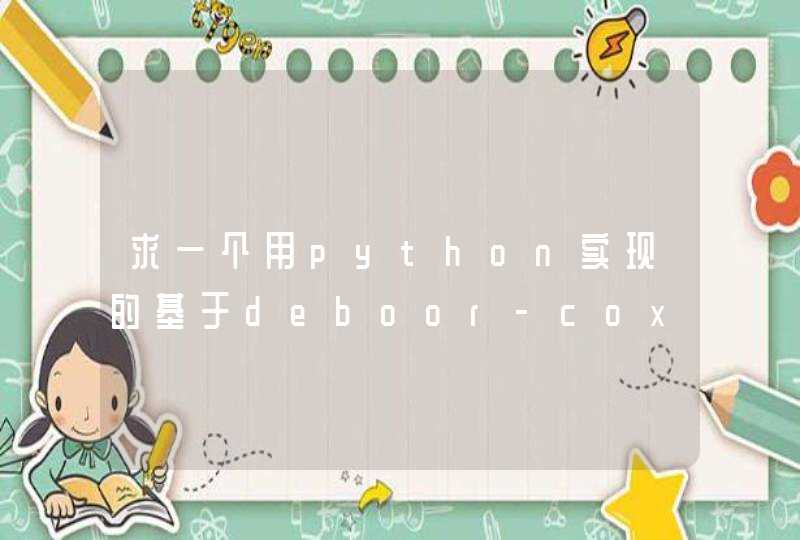
有时候左花括号可以用 do 代替,有花括号用 end 代替,就是
do |args|
statements
end
这种形式。
9马巾帅分享: in 年 in 月 in 季节, on 日 on 节 on 星期。
E.g, on a warm spring,on a hot summer, on a cool autumn, on a cold winter,
in the early morning, in the late evening.
At Christmas(耶稣降生的时间点), at night, at noon, at midnight,
10许梅云:it同类同个,one同类不同个,that用语比较级代替不可数名词:The weather in China is hotter than that in Russia.
11张莉平:It took sb stm to do sth. A quarter, three quarters. One hour and a half, one and a half hours. GDP: Gross Domestic Product. Vegetables or fruit. Apple俩音节一个元音a一个辅音L. That’s all right.= It doesn’t matter./You are welcome.
12王蓓蓓:零冠词。
13许梅云:if,(如果,是否)(条件,状从)区分(时态,主将从现,作know宾语)
I don’t know if that man can save me. I didn’t know if that man
If you save me, I will marry you.(marry嫁娶都可以)
14张丽萍:直去双改:双尾 :停止聊天单脚跳,计划旅行掉下去。 Stop, chat, hop, plan, travel/trip, drop, nod.
独自方,高乐序,惯家形。零冠词:一是名称和复数。二是学科和语言,三是星期,季节,节日。
8 月 30
15爱科:固定搭配:
His boss made him do much hard work.
He was made to do much hard work by his boss.
Mummy, I want you to buy a toy car for me.
Dear/Darling, I would like to see a film. Would you like to go with me?
16艳红只用(whether):He has no idea whether he comes or not.同位语从句
The question is whether the enemy is marching towards us.表语从句
Weather he comes or not has nothing to do with me.主语从句
17doing---动名词或者现在分词
What’s your hobby?-- Collecting stamps is my hobby.
非谓语分类:to do, doing=现在分词+过去分词, done
18张艺田:祈使句:Do speak loudly.
19高琪: V爸唠叨你胖。V:动原 B:be+形 L:Let’s go. D:Don’t do it. N:No smoking. P:Please do me a favor. Let us go to the zoo. Don’t let us go to the zoo. Let’s 让我们一群人,大于三,let us 就你和我 不包括他。
插曲:转正答辩 :
At 6:30 on the morning of August 7th,2008.
+讲课总分总
+印象最深刻的一件事情·
+上次答辩没过的原因是什么
+对于这些点你在下面又做了一些什么工作
+这次答辩准备了多久+
20李海迪:e饿:一只长(wear)着头发的熊在哪里,在那里,在椅子上吃梨
oo:大脚厨师站在教室的羊毛木头上边吃曲奇边看好书。
21.Winnie王晶:情态动词+动原不受时态和单三影响。Ruby点评:学情介绍,总分总,为什么讲,不管对错让学生讲为什么。
22.小花:动词单三,直接加,以吃屎是错的结尾加es,以辅音+y结尾的:try,cry,carry, 以辅音+o结尾:do,go, Ruby:什么是辅音字母。
23.艳红:一般疑问句:be,情,助,总分总。什么是什么,对比一下,是一样的。先练习一道或者两道,I want to answer the call of nature. I want to do some make
up. I want to go to John.
24.May you be happy every day.可能,允许, 可能性:must/can/could/may/might。 小猪pk佩奇,,,.选几个讲清楚即可。
25.忆田:助动词。我的主要讲清楚讲几项东西。
26.张grace:都是四条,过去式:直去双改,去哑巴e,双尾字母。Stop,drop,plan,nod,beg,chat,trip.112—55—30.停止聊天单脚跳,计划点头掉下去。
27.ruby.非谓语:1.三种基本形式:to do(表目的,表将来), doing(表主动,表进行), done(表被动,表完成)2.用法:在一个简单句子中,当句中已有一个谓语动词,接着再出现一个动词时,需要用非谓语形式。例如:一个漂亮的小女孩坐在树下看书。A beautiful little girl is sitting under a tree reading a book.基础类的学生讲to do/doing的搭配。备注:所有的非谓语都可以用主语从句或定语从句来表达。Given考虑到/Having broken the cup,he feels sorry.
在Ruby中,有多种方法可以实现方法的动态调用。
1.
使用send方法
第一种实现动态方法调用是使用send方法,send方法在Object类中定义,方法的第一个参数是一个符号用来表示所要调用的方法,后面则是所调用方法需要的参数。
“This
is
a
dog1″.send(:length)
=>
14
上面的代码中通过send方法去对一个字符串执行length操作,返回字符串的长度。
class
TestClass
def
hello(*args)
”Hello
”
+
args.join(‘
‘)
end
end
a
=
TestClass.new
puts
a.send
:hello,
“This”,
“is”,
“a”,
“dog!”
执行结果为:
Hello
This
is
a
dog!
2.
使用Method类和UnboundMethod类
另一种实现动态方法调用是使用Object类的method方法,这个方法返回一个Method类的对象。我们可以使用call方法来执行方法调用。
test1
=
“This
is
a
dog1″.method(:length)
test1.call
=>
14
class
Test
def
initialize(var)
@var
=
var
end
def
hello()
”Hello,
@var
=
#{@var}”
end
end
k
=
Test.new(10)
m
=
k.method(:hello)
m.call
#=>
“Hello,
@iv
=
99″
l
=
Test.new(‘Grant’)
m
=
l.method(“hello”)
m.call
#=>
“Hello,
@iv
=
Fred”
可以在使用对象的任何地方使用method对象,当调用call方法时,参数所指明的方法会被执行,这种行为有些像C语言中的函数指针。你也可以把method对象作为一个迭代器使用。
def
square(a)
a*a
end
mObj
=
method(:square)
[1,
2,
3,
4].collect(&mObj)
=>
[1
4
9
16]
Method对象都是和某一特定对象绑定的,也就是说你需要通过某一对象使用Method对象。你也可以通过UnboundMethod类创建对象,然后再把它绑定到某个具体的对象中。如果UnboundMethod对象调用时尚未绑定,则会引发异常。
class
Double
def
get_value
2
*
@side
end
def
initialize(side)
@side
=
side
end
end
a
=
Double.instance_method(:get_value)
#返回一个UnboundMethod对象
s
=
Double.new(50)
b
=
a.bind(s)
puts
b.call
执行结果为:
100
看下面一个更具体的例子:
class
CommandInterpreter
def
do_2()
“This
is
2
”
end
def
do_1()
“This
is
1
”
end
def
do_4()
“This
is
4
”
end
def
do_3()
“This
is
3
”
end
Dispatcher
=
{
?2
=>
instance_method(:do_2),
?1
=>
instance_method(:do_1),
?4
=>
instance_method(:do_4),
?3
=>
instance_method(:do_3)
}
def
interpret(string)
string.each_byte
{|i|
Dispatcher[i].bind(self).call
}
end
end
interpreter
=
CommandInterpreter.new
interpreter.interpret(’1234′)
执行结果为:
This
is
1
This
is
2
This
is
3
This
is
4
3.
使用eval方法
我们还可以使用eval方法实现方法动态调用。eval方法在Kernel模块中定义,有多种变体如class_eval,module_eval,instance_eval等。Eval方法将分析其后的字符串参数并把这个字符串参数作为Ruby代码执行。
str
=
“Hello”
eval
“str
+
‘
World!’”
=>
Hello
World!
sentence
=
%q{“This
is
a
test!”.length}
eval
sentence
=>
15
当我们在使用eval方法时,我们可以通过eval方法的第二个参数指明eval所运行代码的上下文环境,这个参数可以是Binding类对象或Proc类对象。Binding类封装了代码在某一环境运行的上下文,可以供以后使用。
class
BindingTest
def
initialize(n)
@value
=
n
end
def
getBinding
return
binding()
#使用Kernel#binding方法返回一个Binding对象
end
end
obj1
=
BindingTest.new(10)
binding1
=
obj1.getBinding
obj2
=
BindingTest.new(“Binding
Test”)
binding2
=
obj2.getBinding
puts
eval(“@value”,
binding1)
#=>
10
puts
eval(“@value”,
binding2)
#=>
Binding
Test
puts
eval(“@value”)
#=>
nil
可以看到上述代码中,@value在binding1所指明的上下文环境中值为10,在binding2所指明的上下文环境中值为Binding
Test。当eval方法不提供binding参数时,在当前上下文环境中@value并未定义,值为nil。









![R语言 > pairs(iris[,1:4]) > pairs(iris[1:4]) 这俩语句画的图一样,,那个逗号是干嘛的??](/aiimages/R%E8%AF%AD%E8%A8%80+%26amp%3Bgt%3B+pairs%28iris%5B%2C1%3A4%5D%29+%26amp%3Bgt%3B+pairs%28iris%5B1%3A4%5D%29+%E8%BF%99%E4%BF%A9%E8%AF%AD%E5%8F%A5%E7%94%BB%E7%9A%84%E5%9B%BE%E4%B8%80%E6%A0%B7%EF%BC%8C%EF%BC%8C%E9%82%A3%E4%B8%AA%E9%80%97%E5%8F%B7%E6%98%AF%E5%B9%B2%E5%98%9B%E7%9A%84%EF%BC%9F%EF%BC%9F.png)



























































